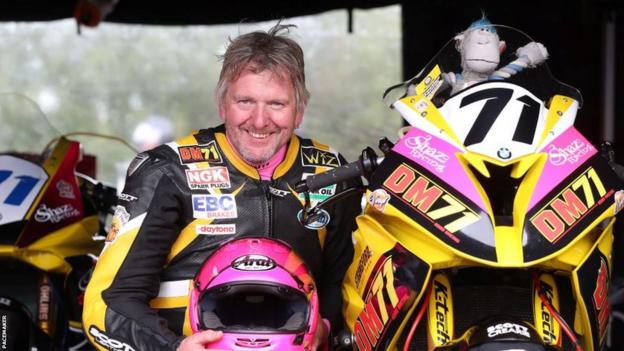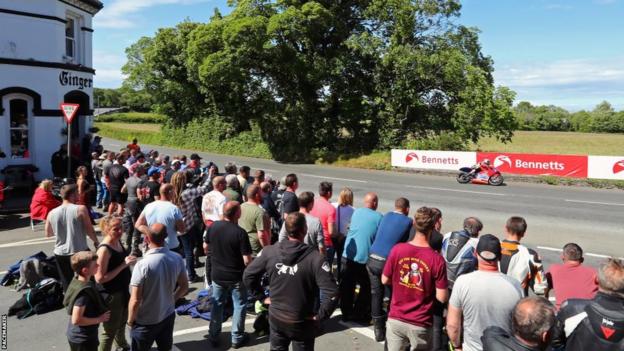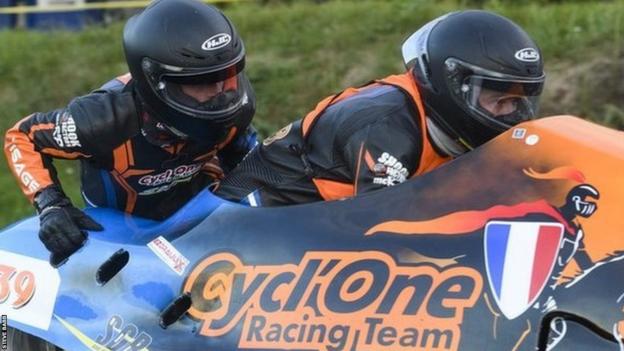
The Isle of Man TT is widely regarded as the most dangerous motorsport event on the planet.
The races have been run 101 times since the inaugural event in 1907 and moved to the Mountain Course in 1911, which has seen 266 fatalities, 155 during the June TT event.
The unforgiving nature of the TT Mountain Course, with its inherent risks, provides part of the appeal for those who choose to take part, the high speeds of up to 200mph a major element of the challenge.
The natural hazards posed by a circuit which is staged on closed public roads are obvious – walls, hedges, telegraph poles, houses, grass banks all line the 37.73 mile course which snakes through towns and villages and over the A18 Snaefell Mountain Road at speeds often averaging upwards of 130mph.
While critics regard the races as an anachronism in a modern-day world where health and safety rules have eliminated many of the risks associated with much more gentile past-times, supporters will point to the fact that riders contest the event of their own free will, fully aware of the risks they are taking.
Measures such as improved road surfacing, safety audits, high marshalling standards and the placing of protective equipment around the course help to reduce the risk, but without the gravel traps and run-off areas which are an established feature of racing on purpose-built short circuits, the possibility of death or serious injury remains a clear and present danger.
Last year’s TT took a particularly heavy death toll, with five competitors dying during the fortnight and another, French sidecar passenger Olivier Lavorel, succumbing to his injuries in October.
Welsh rider Mark Purslow was killed in a practice crash and Northern Ireland’s Davy Morgan lost his life in an incident in the opening Supersport race.
Lavorel’s sidecar driver Cesar Chanal sustained fatal injuries in their crash at the Ago’s Leap section of the circuit, less than a mile from the start-line, while another sidecar pairing, father and son Roger and Bradley Stockton, died after an accident at the same area of the course later in the week.
It made 2022 the worst in the event’s history in terms of deaths, equalling the number of fatalities at the 1970 TT.
After the meeting, organisers indicated they would “learn from each incident” to remove any unnecessary risk from the event.

With the 2023 TT starting on Monday, organisers have introduced a number of measures which they hope will improve safety management at the event.
A new Safety Management System (SMS) brought about a raft of changes when introduced before TT 2022, including digital red flags, new fast-response vehicles and a redesigned Race Control.
“This work was just the beginning of a never-ending process to improve the levels of safety at the Isle of Man TT Races, which continues apace in 2023,” read a statement published on the official Isle of Man TT Races website.
Among the innovations brought in for 2023 is “instant and comprehensive location information available for Race Control courtesy of a new GPS system”, with the aim of “managing situations quicker and more easily”.
“GPS tracking was first introduced in 2019 to monitor the movements of non-competing vehicles such as Course Cars, Response Cars, and other emergency service vehicles,” the organisers explained.
“The system was then tested on a number of competitors’ machines in 2022 and following the success of this trial, every competing machine and every non-competing vehicle that may require access to the course will carry a tracking device at the 2023 Isle of Man TT Races.”
This year an additional Riders’ Briefing will also take place midway through qualifying week to provide another forum for riders to give feedback and raise what they may consider to be important points based on what they have experienced during the opening practice sessions.
The digital red flag system introduced in 2022, which offered the ability to issue a full-course red flag at the touch of a button, will be expanded in 2023.
“We had 28 units around the course in 2022 and there will be an additional seven in place for TT 2023, but we’ll also be using them to issue ‘black flags’ – getting faulty machines off the course quicker and from the central location in Race Control,” explained clerk-of-the course Gary Thompson.
“They are somewhat of a rarity in circuit racing but given the rigours of the course and the stresses the bikes are under [at the TT], plus the risk a potentially faulty bike can have on a competitor and on other competitors, ‘black flags’ are far more common at the TT.”
“A suspected faulty machine will still be reported in the same way, with our marshals observing and reporting any potential issues, Race Control making a decision on whether or not a machine should be stopped, and our team of Travelling Marshals inspecting any bike that is stopped, but the Digital Flag System will now supplement the marshals deploying black flags to the riders.”

For this year’s event, the regulations that affect grid formation for each race have also been altered, reverting to the format used prior to TT 2022.
Seventy entries were accepted for the shorter Superstock, Supersport and Supertwin Races, and 60 accepted for the six-lap Superbike and Senior races. Of these entries, only the fastest 60 will qualify for the shorter races and the fastest 50 will start the six-lap races.
For each race, the ‘seeded’ riders from 1 to 20 will start in number order at the usual 10-second intervals but the rest of the field will then be ordered by qualifying speed.
Thompson explained the decision to revert back to the previously-used format: “We trialled a revised system last year which saw every competitor set off in number order, irrespective of qualifying speed.
“Whilst the Race Management Team worked hard to assign race numbers in order of speed by using data from past performances, some competitors far exceeded expectations whilst others were perhaps not achieving the lap times we had anticipated.
“Having all the competitors start in number order clearly makes it easier for the fans around the course to follow the action, but reverting back to the system that was used in 2019 means there will be less disparity in speed between competitors throughout the grid, which has obvious safety benefits.
“Setting off in number order is good for the watching fans, but the speeds at the TT are now so high that safety takes absolute priority and we had significant feedback from the riders across the entry that they wanted us to revisit this.”

The deaths of four sidecar competitors in two separate incidents at the same section of the circuit was a particularly tragic part of TT2022, the grief compounded by the fact that the French pairing of Chanal and Lavorel had initially been misidentified.
It later emerged the pair had been wearing each other’s identification tags.
Speaking on Manx Radio, which will broadcast live coverage of the races, Thompson said measures were being introduced to improve safety for the three-wheeler class.
“We’ve had pre-event MoT checks undertaken by the Technical Director, a far more stringent technical check of all sidecar outfits prior to the TT,” he outlined.
“No sidecar outfit will be able to sign on [to take part] until those pre-event MoT checks have taken place.
“As an extra form of identification all sidecar drivers will now have to wear elasticated armbands,” explained Thompson.
“There will be spot-checks for all competitors in the assembly area before they go up onto the start-line ahead of qualifying sessions and races.
“In addition to that they now have to wear identification sown into their leathers on the inside.”